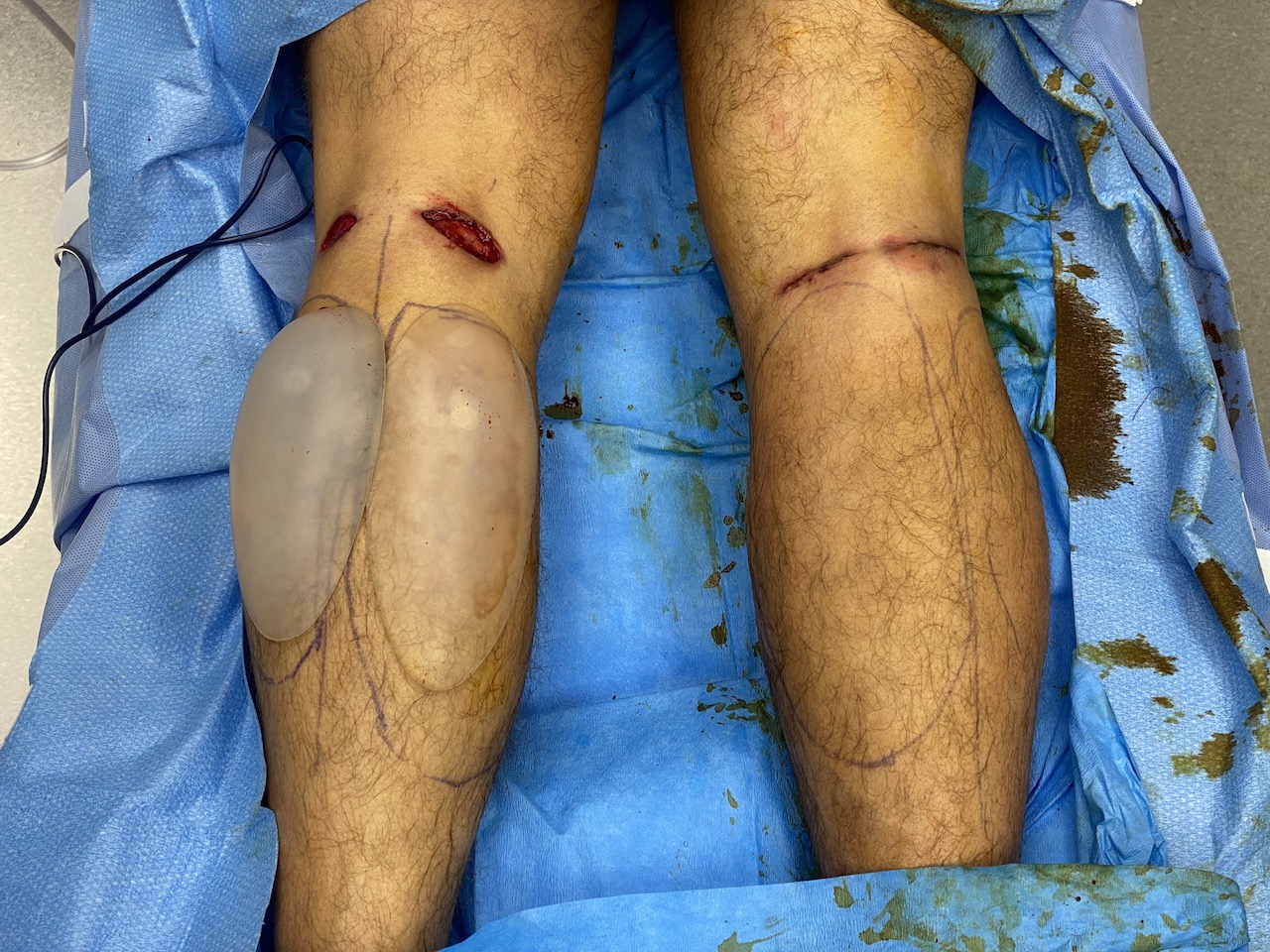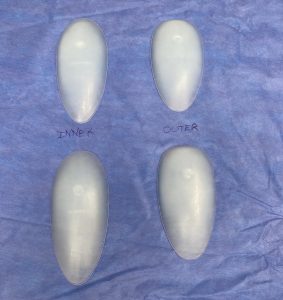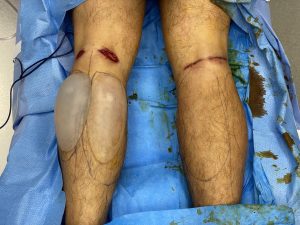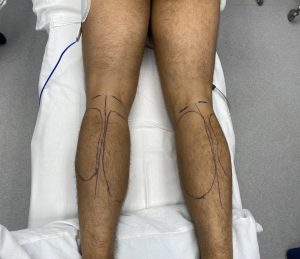Background: Augmentation of the lower legs can be done by either fat injections or implants. Each has their advantages and disadvantages which is consistent with the same choice for any other body muscle augmentation. Fat injections are an autologous procedure that has few complications and is a natural material but its volume retention is unpredictable and its aesthetic effect is more of a ballooning r swollen appearance of the augmented area. Implants are foreign bodies and, as a reult, can have more potential complications but is volumetrically stable and usually creates a more defined muscular appearance.
When considering calf implant augmentation an important aesthetic decision is whether one or both calf muscles should be augmented. The inner or medial gastrocnemius muscle is larger and longer in length than the outer muscle. It is also the most visible from the front view and thus is more aesthetically valuable. Patients usually augment the outer gastrocnemius muscle also when their goal is an overall larger lower leg appearance or they value how the lower leg looks from behind in which the enhancement of both muscles is important.
Beyond the aesthetic differences augmenting one vs two muscles per leg has other significant implications. The obvious one is the recovery. Traumatizing all four muscles of the lower leg does make the recovery more difficult and harder to walk early on after the surgery. But it also affects the choice of implant size. With twi implant placements per leg one has to be vigilant about the rare risk of compartment syndrome. Large implants in both muscles, combined with the swelling that will ensue, could potentially impede the blood flow to the foot by compression of the perineal artery. As a result of this risk, rare though it may be, it is prudent to choose smaller implant sizes in the 4 implant calf augmentation patient.
Case Study: This male desired to have both calf muscles of the lower leg augmented. Preoperative measurements were taken in the toe standing position to accurately determine the length and width of the calf muscles.
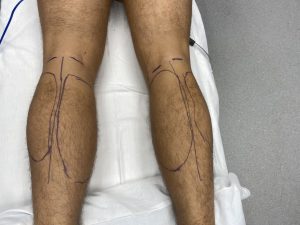
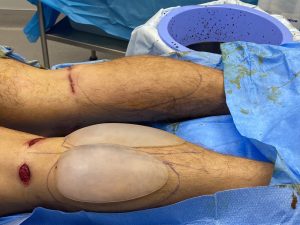
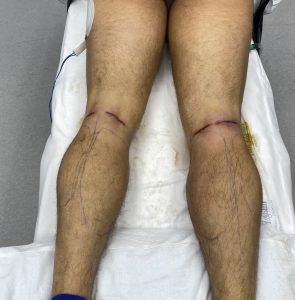
Case Highlights:
1) Calf implants are most commonly placed in the subfascial pocket on top of the muscle through incisions placed in the popliteal fossa behind the knee.
2) An important preoperative decision is whether one or both gastrocnemius muscles of the lower leg are to be augmented.
3) Understanding and being prepared for the recovery from calf implants is an important preoperative education/preparation.
Dr. Barry Eppley
World Renowned Plastic Surgeon

